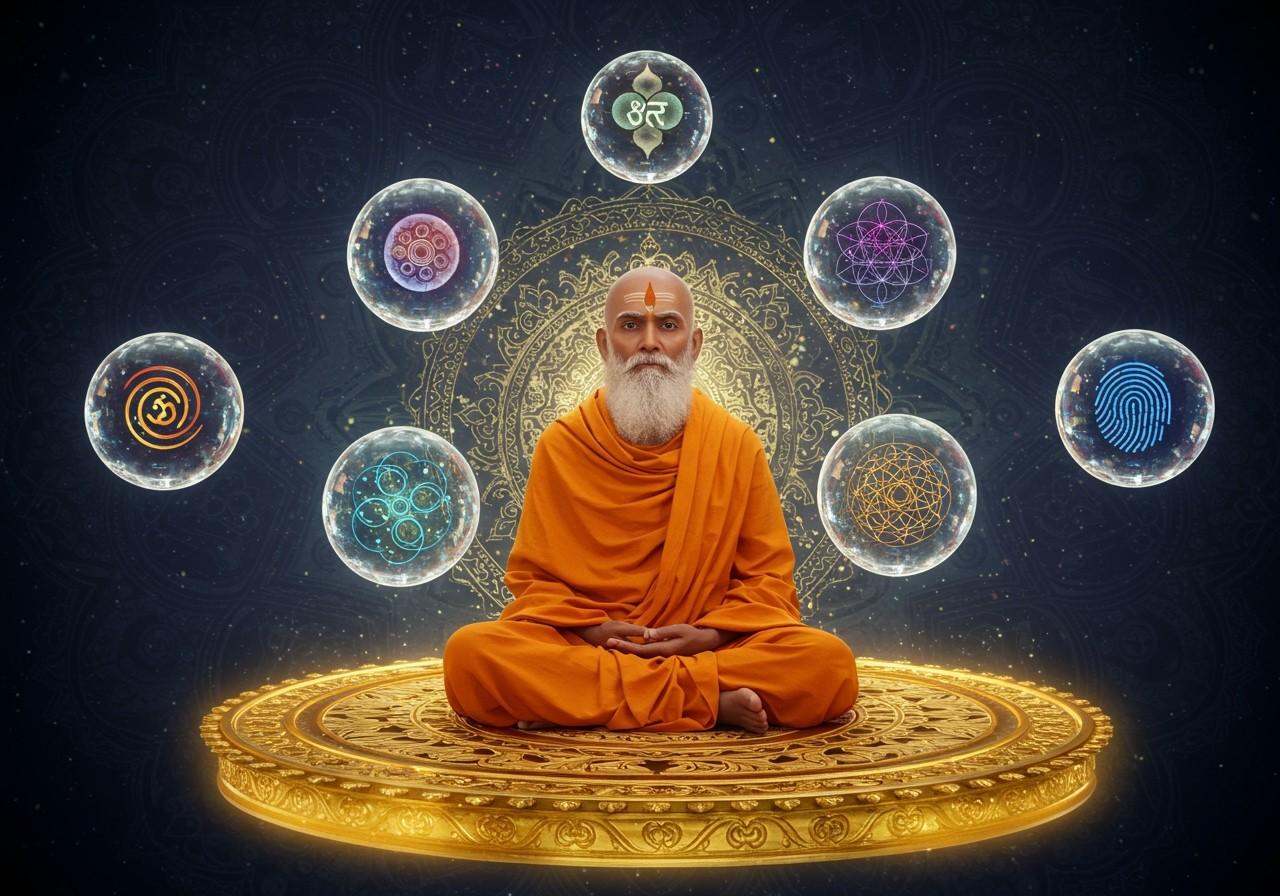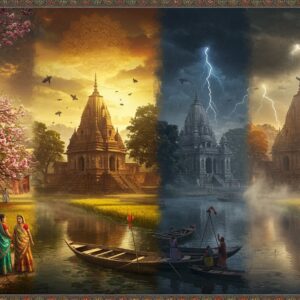Exploring Vaisheshika Philosophy: A Comprehensive Guide

Vaisheshika, established around 300 B.C. by sage Kanada, is one of the six classical schools of Indian philosophy. It offers a distinctive lens for understanding the world, emphasizing categorization and logical reasoning. Delving into its core principles reveals its relevance to contemporary discussions on metaphysics and knowledge.
Understanding the Metaphysics of Vaisheshika
Vaisheshika’s metaphysics champions pluralistic realism, recognizing variety and diversity as fundamental to reality. This school posits that all objects in the physical universe can be reduced to paramāṇu (atoms). Our experiences arise from the interplay of substance, quality, action, commonness, particularity, and inherence. For a deeper dive into Hindu philosophy, explore this insightful guide: Hindu Philosophy Explained: A Beginner’s Guide.
The Seven Categories (Padarthas)
Vaisheshika philosophy employs seven categories, known as Padarthas, to explain existence:
- Substance (Dravya): The foundational building blocks of existence, encompassing nine elements: earth, water, fire, air, ether, time, space, self, and mind. These elements form the basis of the physical world as we perceive it.
- Quality (Guna): Attributes like color, taste, smell, touch, sound, number, magnitude, distinctness, conjunction, disjunction, remoteness, proximity, and fluidity. These qualities help us differentiate between substances and perceive them uniquely.
- Action (Karma): Movements, changes, and transformations that substances undergo, influencing their interactions and the dynamic nature of reality. This includes upward motion, downward motion, contraction, expansion, and going.
- Generality (Samanya): The concept of shared characteristics or common traits among multiple entities, allowing us to classify and group objects and ideas. This category addresses the universality present in the diversity of existence.
- Particularity (Vishesha): Unique characteristics that distinguish individuals and define their distinct identity, highlighting the principle of individuality within the universe. It emphasizes the unique aspects of each entity.
- Inherence (Samavaya): The inseparable connection between substances and their qualities or actions, emphasizing their interdependence and the holistic nature of reality. It explains how qualities cannot exist without a substance to inhere in.
- Non-existence (Abhava): The concept of absence or non-being, adding another dimension to our understanding of reality by acknowledging what is not present. This category helps us understand the limitations and boundaries of existence. It helps define what something is by understanding what it isn’t.
These categories provide a framework for understanding how the world is structured and interpreted within Vaisheshika thought.
Exploring Vaisheshika Guna (Qualities)
Gunas, or qualities, are inherent attributes of substances. Vaisheshika identifies 24 Gunas, including color, taste, smell, touch, and sound. These qualities enable us to perceive and interact with substances through our senses. You can discover a wide array of products related to these elements at Poojn.in. They play a critical role in distinguishing one substance from another.
Vaisheshika’s Epistemology: Pramanas
Vaisheshika emphasizes perception (pratyaksha) and inference (anumana) as the primary sources of knowledge. Perception involves direct sensory experience, while inference utilizes logical reasoning based on observed patterns. For those interested in Hindu symbolism, Hindu Symbols Explained: Their Meanings and Importance offers valuable insights. These pramanas form a reliable basis for understanding reality. For example, Mahosadhi is often used in Hindu rituals.
The Relationship between Vaisheshika and Nyaya
While initially separate, Vaisheshika and Nyaya philosophies gradually converged. They share similar ethical principles and methodologies, ultimately merging into the Nyaya-Vaisheshika school. Both schools strive for liberation through accurate knowledge, believing that ignorance is the root of suffering. Explore the concepts of Dharma and Karma in Hinduism further: Dharma and Karma in Hinduism Explained.
Vaisheshika’s Atomism
Vaisheshika’s atomism proposes that reality comprises five fundamental substances: earth, water, air, fire, and space (or ether). Each exists in two forms: paramāṇu (indivisible and indestructible atoms) and composite matter. The interplay of these elements creates the physical world we experience.
The Concept of God in Vaisheshika
Although early Vaisheshika didn’t explicitly mention “God,” later commentators suggested a divine entity that oversees the activities of atoms to maintain order in the universe.
The Path to Liberation in Vaisheshika
Vaisheshika, like Nyaya, identifies the liberation of the individual self as the ultimate goal. They believe that ignorance causes suffering and that liberation is achieved through genuine knowledge of reality. Discover more about the global influence and diverse traditions of Hinduism: Hinduism’s Global Reach: A Look at Its Diverse Traditions.
Vaisheshika in Modern Times
With its systematic categorization and logical framework, Vaisheshika philosophy remains a source of wisdom. Its core concepts enhance our appreciation for the complexity of the world, encouraging critical thinking and a deeper understanding of our experiences. Products like Green Mung Dal and Jaifal (Nutmeg) are available on Poojn.in for various ritual purposes.
Explore a range of spiritual items like Adiyogi Murti, Lord Shiva Murti, and Standing Shiva Murti on Poojn.in to enhance your spiritual practices.


